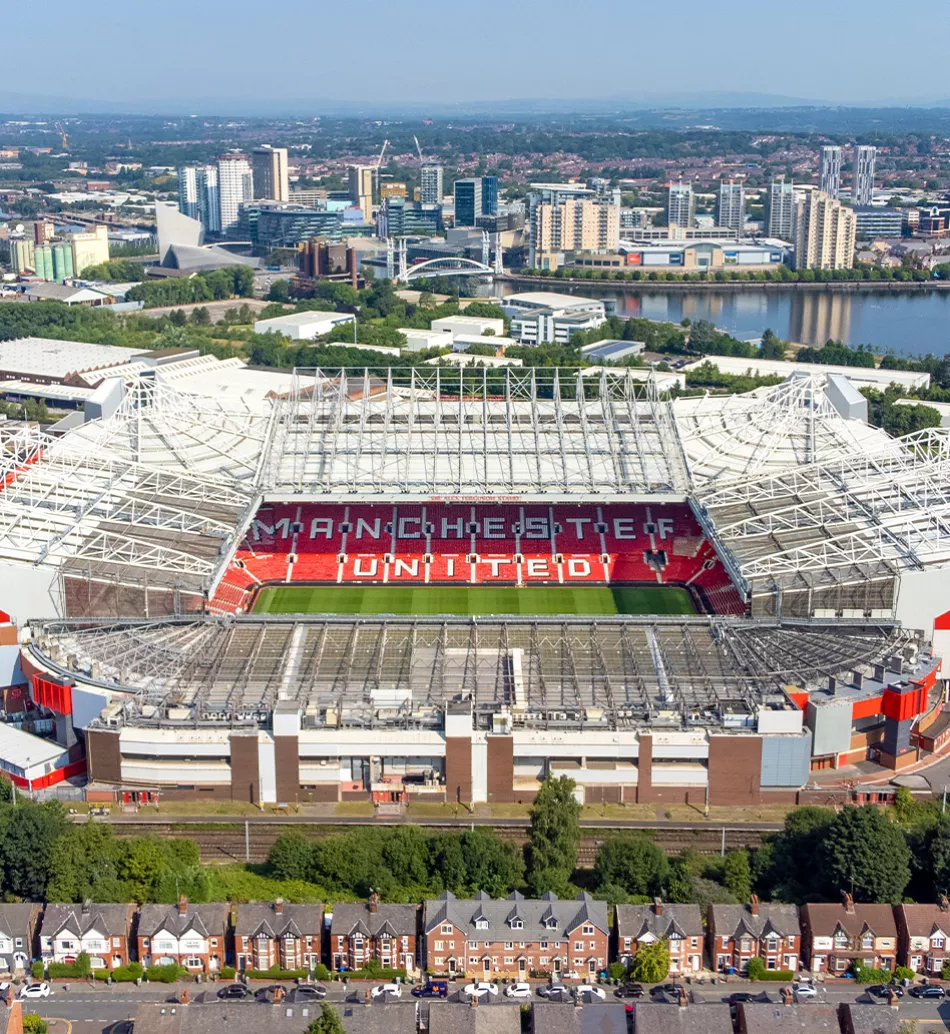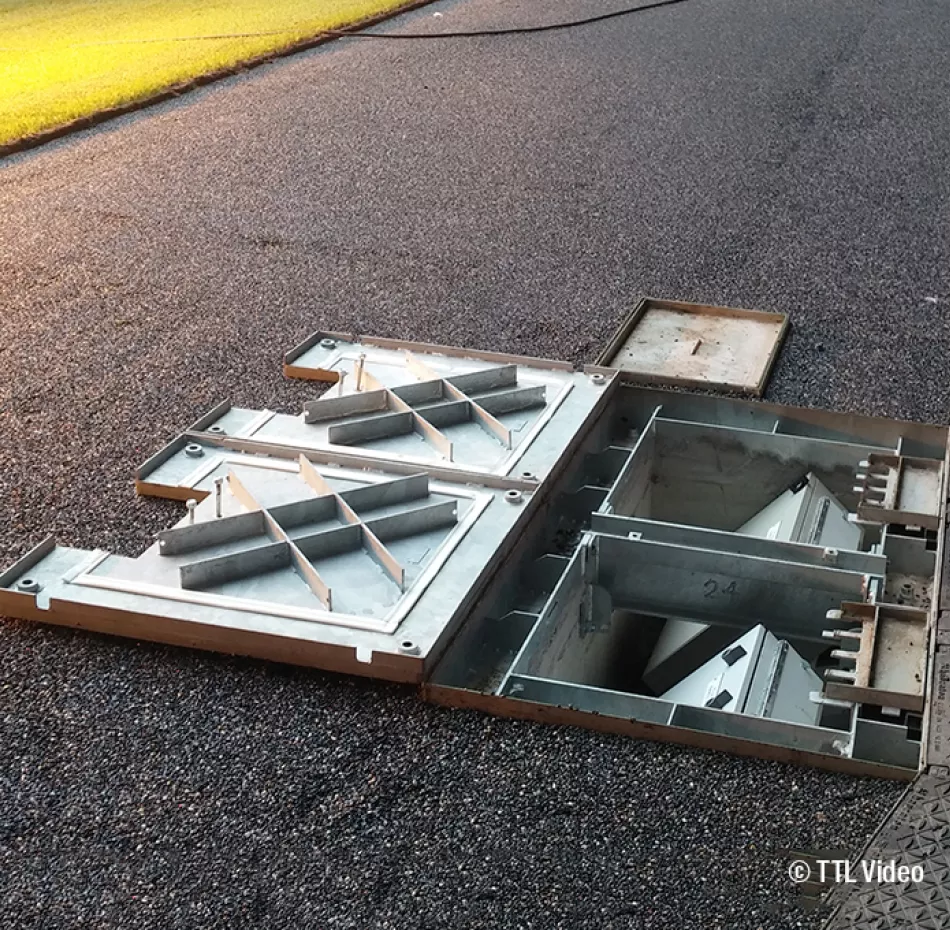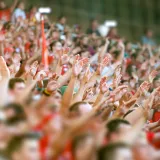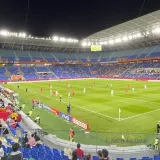Broadcasting the most powerful football league

Manchester United with its home ground Old Trafford, nicknamed “ Theatre of Dreams ” ; Anfield, legendary home of Liverpool F.C. and countless others. English clubs are the Mount Olympus of football, and their stadiums are respected temples.
Broadcast in more than 210 countries, the prestigious Premier League is followed by over 3.2 billion people around the world (source Nielsen). Not to mention the spectators watching the matches in pubs or on mobile media. Its cumulative television broadcast rights could easily amount to 4 billion dollars.
To keep its special status, the Premier League must guarantee a great show. On the football pitch, by attracting the biggest stars and playing an intense attacking game. In its stadiums, constantly improved, when not completely rebuilt (nine new stadiums since the creation of the Premier League in 1992). And, on a global scale, by capturing every move and every emotion, transforming them into Hollywood drama.
At the heart of this international show, there is a small British company of 12 people.
Created in 1987, TTL Video started off with a broadcast truck, offering its services to cover horse races and news events. In 2000, steering change : the company became a permanent broadcast infrastructure installer, in particular for football stadiums. And it works. “ Today, we have equipped 45 stadiums ” tells us Stefan Bewsey, TTL Video’s chief engineer. “ Including 19 out of the 20 current Premier League stadiums ! ”
At first, these installations used triaxial cables (already with LEMO connectors). As of 2013, the Premier League moved on to HDTV and requested all the clubs to use fibre optic connectors and cables. So, TTL Video has progressively equipped all the stadiums with permanent broadcast installation complying with SMPTE standards (again with LEMO connectors).
What does permanent cabling actually mean ? It sounds quite simple : “ We install all the necessary cables for broadcast units. They don’t need to bring their own cables to lay them before the matches (and withdraw them after the matches). They arrive and connect themselves onto the existing network, it is as simple as that. ”
This permanent network links the parking area of the stadium, where the broadcast companies’ OB vans arrive, with all the sources : cameras and microphones, press rooms, commentators’, and interview booths, etc.
The preparation of a match coverage is hence greatly facilitated. Broadcasting is safer and more reliable, and the stadiums and surrounding public areas are tidy and free from miles of cables lying all over the floor.
Once the installation is ready, TTL Video also provides maintenance, which is absolutely necessary, since part of the cables is outdoors (in England’s notoriously wet climate), where they are stepped all over and dragged on the ground. This means considerable risk for sensitive fibre optics. “ So, we check and clean all the cables and connectors twice during the championship, in every stadium. ” It is out of the question for dust to compromise the show.
Major transformations, such as upgrades of the broadcast system, must be carried out during the off-season, when the stadiums are empty. A 10 to 12-week break fully loaded for TTL Video – Time is always my biggest worry ! ”, says the chief engineer. To keep the deadlines, the small company needs sometimes 30 or 40 extra staff.
As always with the Premier League, the mission is not an easy one, given the large-scale organisation.
In fact, the installations are usually intended for not only one but seven broadcasters (two British, five foreign) working simultaneously. The Premier League’s camera plan includes 41 locations and, most of the time, at least twenty cameras are used for shooting a match.
Inside of the stadiums, there are two hard-wired TV studios for shooting and five hard-wired interview booths. There are seven pitch-side locations equipped for interviews before and after the matches. Sorry, ten locations : “ Requested by the Premier League, we are in the process of installing three more in each stadium for the 2022-23 season ! ” (This being the latest example of an “ upgrade ” provided by TTL).
Every single location, linked through the vast network, is wired for image, sound (comments, interviews, ambient noise…) and power supply (lights, equipment…). With duplications for double security. A total of over 300 cables makes up a stadium’s broadcast installation, including 70 fibre optic cables.
In a stadium, such as Nottingham Forrest’s, equipped by TTL Video this year, 95 km permanent cabling was necessary. This was by far not a record for the company. “ Tottenham Hotspurs’ stadium is a special case since it also hosts some NFL American football matches. The system is more complex and requires more equipment. We have laid 600 cables that make up a total length of over 200 km ! ”
Such installations generate a number of decisive benefits for the powerful Premier League.
“They made it possible very early on to broadcast worldwide, consistent and more personalized experience ” explains Bewsey. “ By multiplying commentator booths, studios and pitch-side interview locations, the Premier League enables television broadcasting companies to provide content that reaches and connects much better with their audiences. ” A French television channel can for example interview a French player, while a Korean broadcaster interviews a Korean player, which is much more engaging than a unique broadcast for all audiences.
The technical quality is also optimised and perfectly broadcast. Television viewers are increasingly immersed thanks to sound quality. The images shot and broadcast in 4K (“ 8K is probably the next step ”) are rich with vivid colours and seize even the leaves of grass around the players’ feet.
Finally, more equipment also enables improved production and varied scenarios. Long gone, the static film sequences shot with static cameras almost exclusively from the stands !
Nowadays, broadcast editing – with vivid broad plans, emotional close-ups, dramatic slow-motion sequences, dizzying travelling shots – is as rich and cinematographic as an episode of the “ Rings of Power ”.
“Such content and production quality trigger a huge output. It was impossible to broadcast such an amount of data before fibre optic installations. ” By acquiring early on the necessary infrastructures and equipment, the Premier League paved the path to its global success.
The powerful league is of course always on the lookout for innovation. 8 years ago, it tested 3D broadcasting – “ It didn’t take off and I don’t see it coming back ! ” says Bewsey. They tried “ Player Cam ” which made it possible to follow a selected player (sometimes interesting, but often boring). They tried 360-degree images enabling the spectator to look around. – “ A fun gimmick : the images of the normal broadcast are much better ! ”. And the “ 360° replays ” freezing an action and observing it from every angle – “ they are very interesting and could become permanent ”. The “ Spidercam ”, enabling Hollywood-type travelling shots above the players, is often used for big important games.
On the broadcasting side, they are trying to further simplify the installation. There are tests to connect certain cameras via 5G. Remote production is also being considered. “ For which the content captured in the stadiums would be uploaded in the cloud. Broadcasters could get access from their HQ and wouldn’t need to send their production tracks on site ”, explains Stefan Bewsey.
Infrastructures and equipment keep evolving, but they serve the same purpose as at the time of the Premier League’s creation 30 years ago : to propel British football superheroes into even more homes all over the world. And to confirm the Premier League’s status as the most powerful sports league in the world. The football show must go on.


